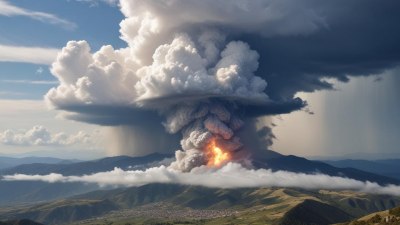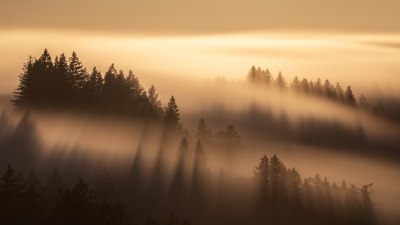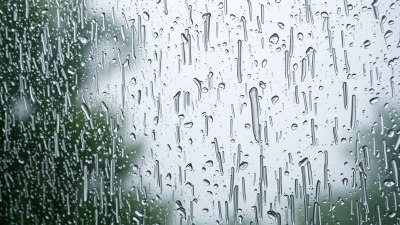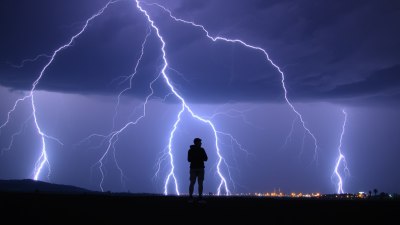Can Clouds Predict Earthquakes? The Mysterious Weather Connections
Explore the intriguing link between cloud patterns and earthquake predictions in this comprehensive article.

This image was created with the assistance of Freepik
For centuries, humans have sought signs from nature to predict disasters, and one area of interest is the connection between clouds and earthquakes. The intricate dance of meteorological phenomena has long fascinated researchers and laypeople alike. In this discussion, we delve into whether clouds can indeed predict earthquakes and unveil the mysterious connections between weather patterns and seismic activities.
The idea that weather phenomena might precede seismic activities has been around for ages. Some people claim that unusual cloud formations and changes in the atmosphere can indicate that the ground is about to shake. Though there is plenty of anecdotal evidence, scientific validation of this claim has remained elusive. This article explores the intersection of meteorology and seismology to understand better the connections between clouds and earthquakes.
The Nature of Clouds
Clouds are essential components of the Earth's climate system. They form when water vapor in the air condenses into tiny droplets or ice crystals. Various factors contribute to cloud formation, including temperature, humidity, and atmospheric pressure. Clouds are classified into different types based on their appearance, altitude, and the processes that created them. From cumulus clouds to stratus clouds, each type has distinct characteristics that can indicate various weather conditions.
Understanding Earthquakes
Earthquakes are the result of sudden movements of the Earth's tectonic plates. These movements can occur due to various reasons, including the accumulation of stress along fault lines, volcanic activity, or even human-induced factors. The seismic waves generated by these movements can cause significant destruction, making the prediction of earthquakes a critical area of research. Despite advances in technology, accurately forecasting the exact timing and location of an earthquake remains a daunting challenge.
Theories on Cloud-Earthquake Connections
Several theories suggest that specific cloud formations may be associated with impending earthquakes. One of the most discussed hypotheses is that the release of radon gas or other gases from the Earth during tectonic shifts can alter atmospheric conditions, leading to specific types of cloud formations. Additionally, it has been proposed that increased electric activity in the atmosphere prior to an earthquake may cause clouds to behave differently. Researchers are continually investigating these theories, but conclusive evidence is yet to support any of them.
Historical Examples
There have been historical accounts of peculiar cloud formations occurring before significant earthquakes. For instance, right before the L'Aquila earthquake in Italy in 2009, residents reported unusual clouds in the sky. Similarly, before the 1983 Coalinga earthquake in California, meteorological observations noted strange weather patterns. While these anecdotal examples are intriguing, the scientific community often urges caution, as correlation does not imply causation.
The Role of Electromagnetic Waves
Another fascinating aspect of the possible link between clouds and earthquakes involves electromagnetic waves. Some researchers believe that the stress buildup in the Earth's crust may generate electromagnetic fields, impacting atmospheric conditions and leading to the formation of specific cloud types. Studies have shown that unusual electromagnetic activity can precede seismic events, but pinpointing this phenomenon's exact influence on cloud patterns remains complex.
Scientific Research and Studies
Numerous studies have investigated the potential relationship between cloud formations and earthquakes. For example, a study published in the journal *Geophysical Research Letters* examined cloud patterns before seismic events in the San Andreas Fault region. The study found that there was a slight increase in certain cloud formations preceding earthquakes; however, the data was inconclusive, highlighting a critical need for further research.
Technological Advances in Prediction
Advancements in technology, such as satellite imagery and remote sensing, have revolutionized meteorology and geology. Scientists can now monitor cloud formations and atmospheric conditions in real-time, providing a clearer picture of potential correlations with seismic activities. These technologies allow researchers to analyze vast amounts of data, increasing the chances of uncovering subtle patterns that may signify impending earthquakes.
Limitations of Current Understanding
Despite various studies and anecdotal evidence, the scientific community remains cautious about asserting a definitive link between clouds and earthquakes. The intricate dynamics between atmospheric conditions and tectonic activities involve numerous variables that make clear predictions challenging. Furthermore, the subjective nature of cloud observations poses another hurdle in validating claims. More extensive, systematic studies are crucial for establishing credible connections between clouds and earthquake occurrences.
Global Perspectives on Predicting Earthquakes
Countries prone to seismic activities often invest heavily in earthquake prediction and risk mitigation. Traditional methods include monitoring seismic activity through networks of sensors and analyzing historical patterns. However, the incorporation of meteorological data is still in its infancy. Several countries are beginning to integrate climatic factors into their seismic models, but the frameworks for doing so are not yet well established.
Public Interest and Misinformation
The mysterious link between clouds and earthquakes continues to pique public interest. However, this fascination often leads to misinformation and misunderstanding about earthquake predictions. Various myths and claims circulate on social media, making it essential for scientific institutions to communicate effectively and clarify misconceptions surrounding the topic. Public awareness campaigns about the complexities of earthquake prediction can help bridge the gap between scientific data and popular sentiment.
Future Research Directions
To unravel the enigmatic relationship between clouds and earthquakes, multiple research directions need exploration. Firstly, interdisciplinary studies blending meteorology and seismology can yield valuable insights into atmospheric changes before seismic events. Secondly, long-term observational studies could help establish patterns that may emerge before earthquakes occur. Lastly, employing machine learning algorithms to sift through massive datasets could unveil hidden connections that remain invisible to traditional analytical methods.
While curiosity regarding whether clouds can predict earthquakes is understandable, the evidence linking the two remains inconclusive. Scientists continue to explore the atmospheric changes that might precede seismic activities, remaining open to the possibility that future discoveries may illuminate this complex relationship. Until then, climate and geology remain intriguing fields of study, offering valuable lessons about our world and its dynamic nature.











